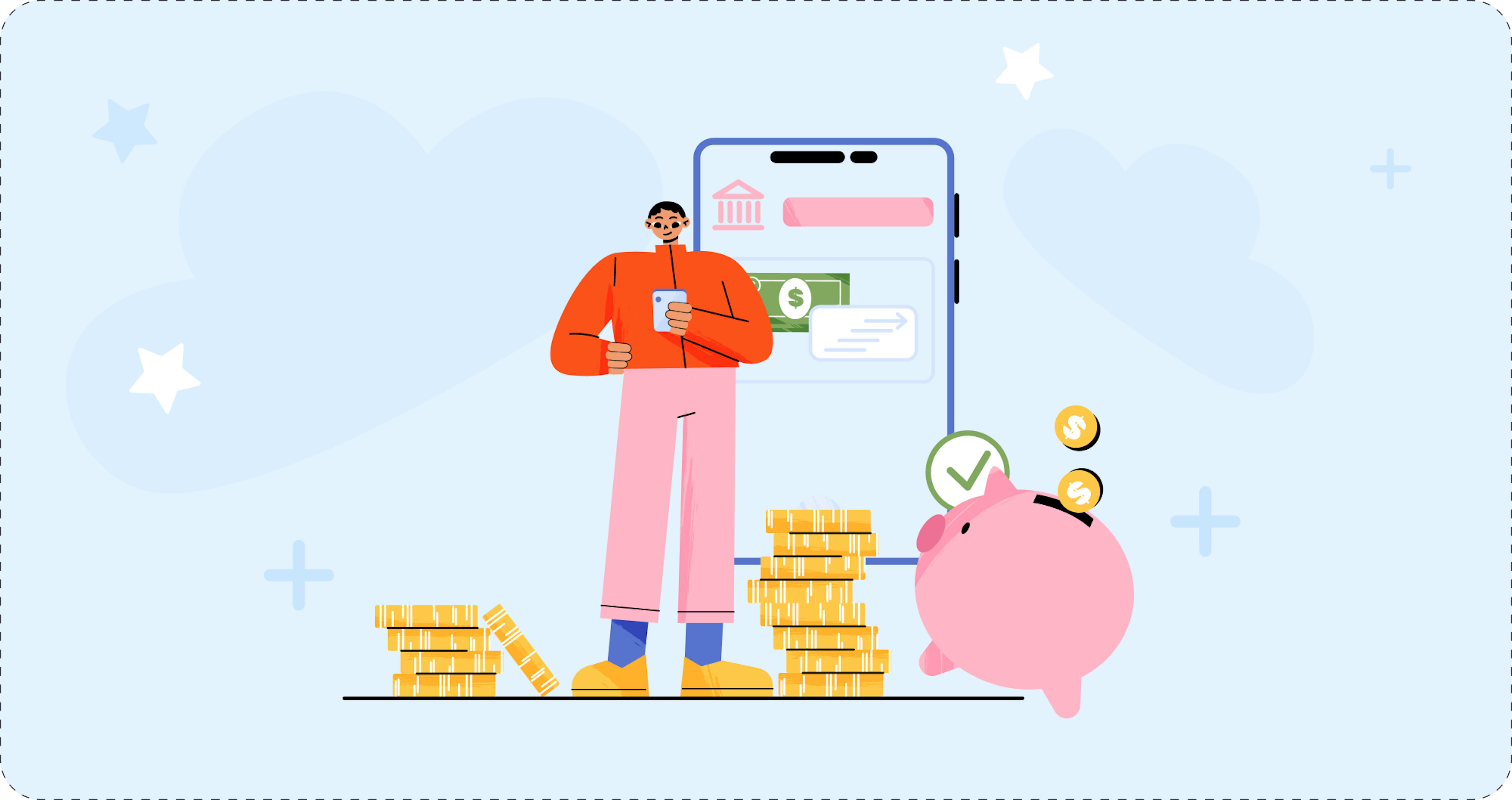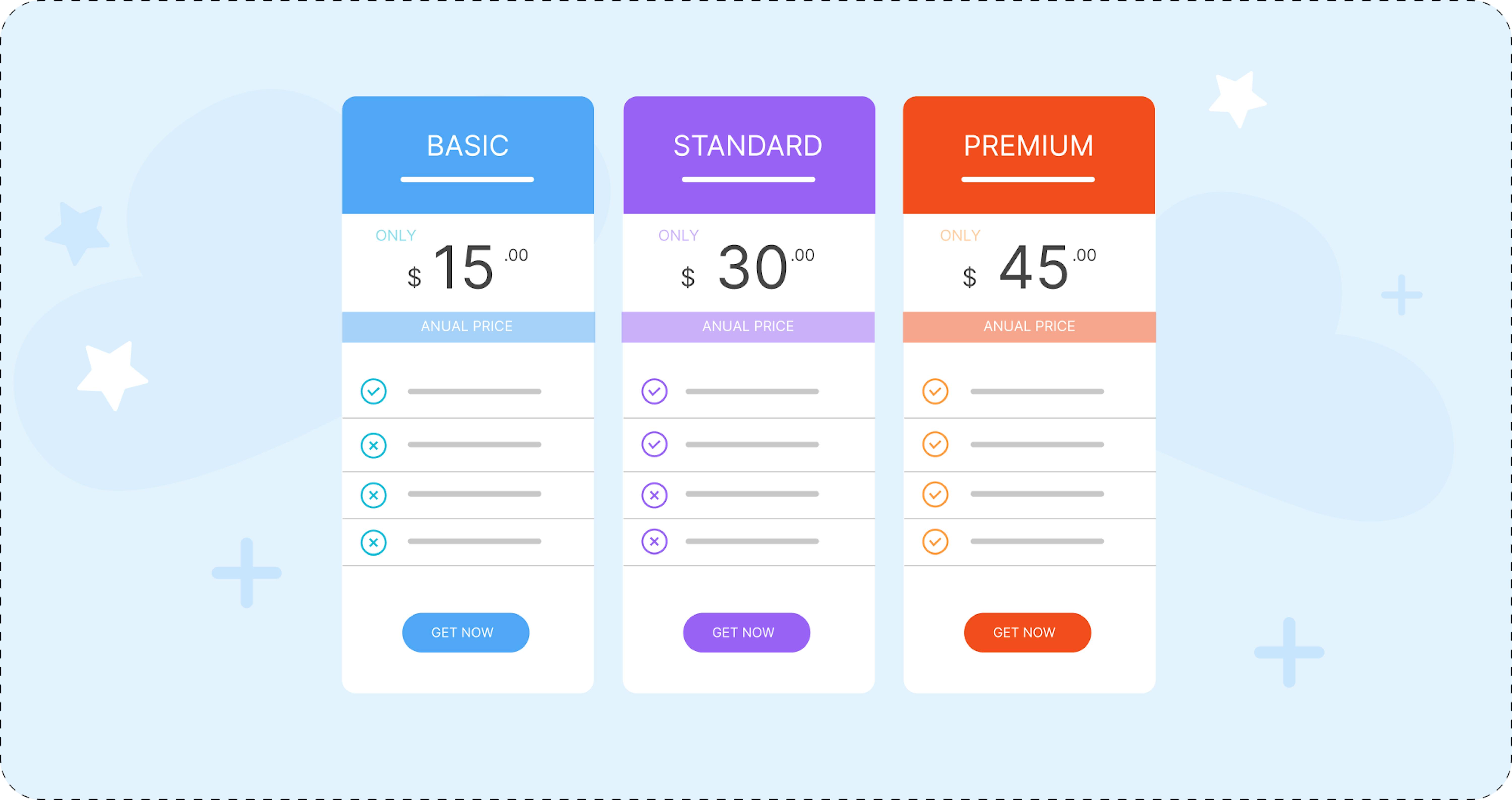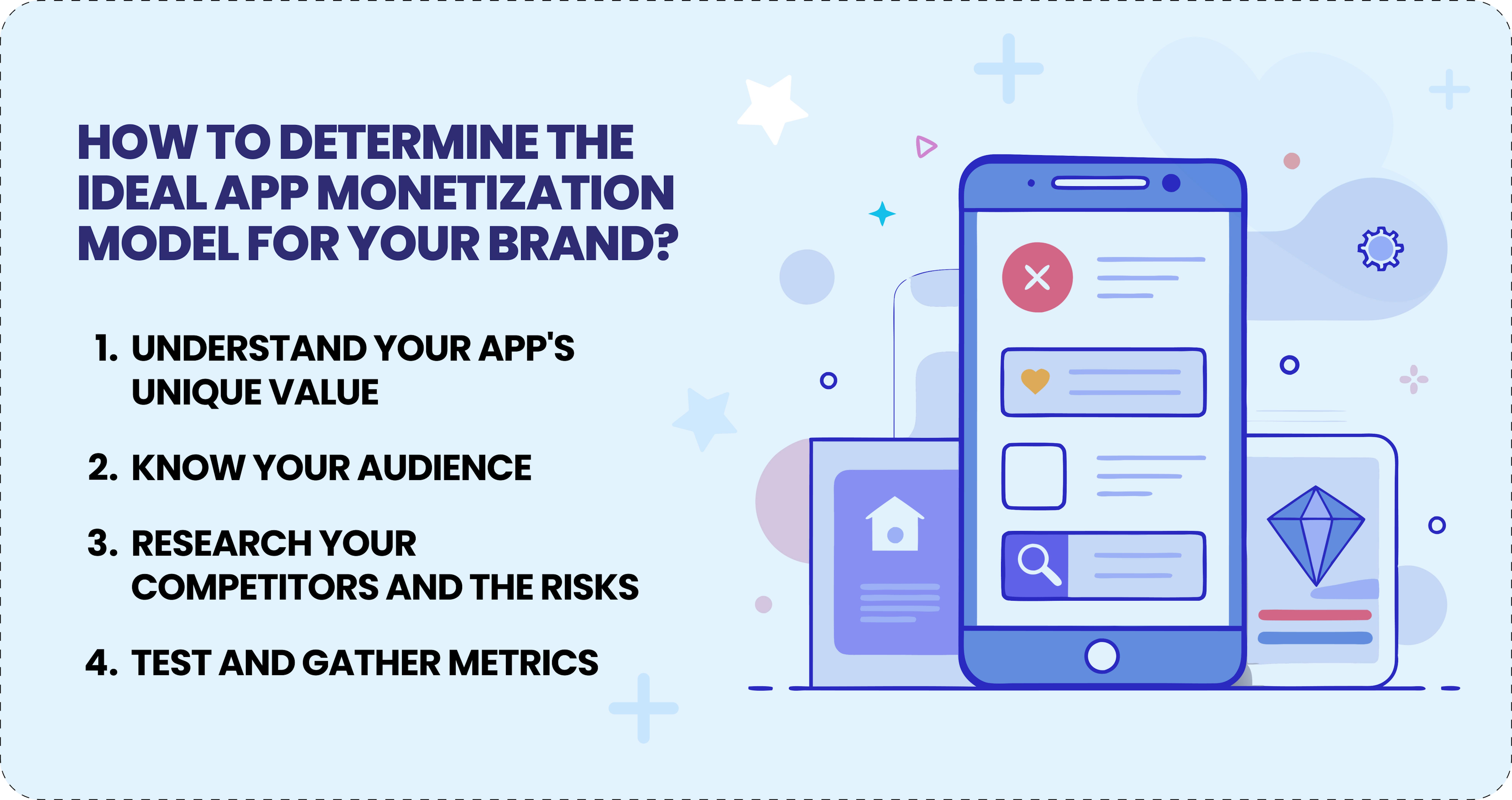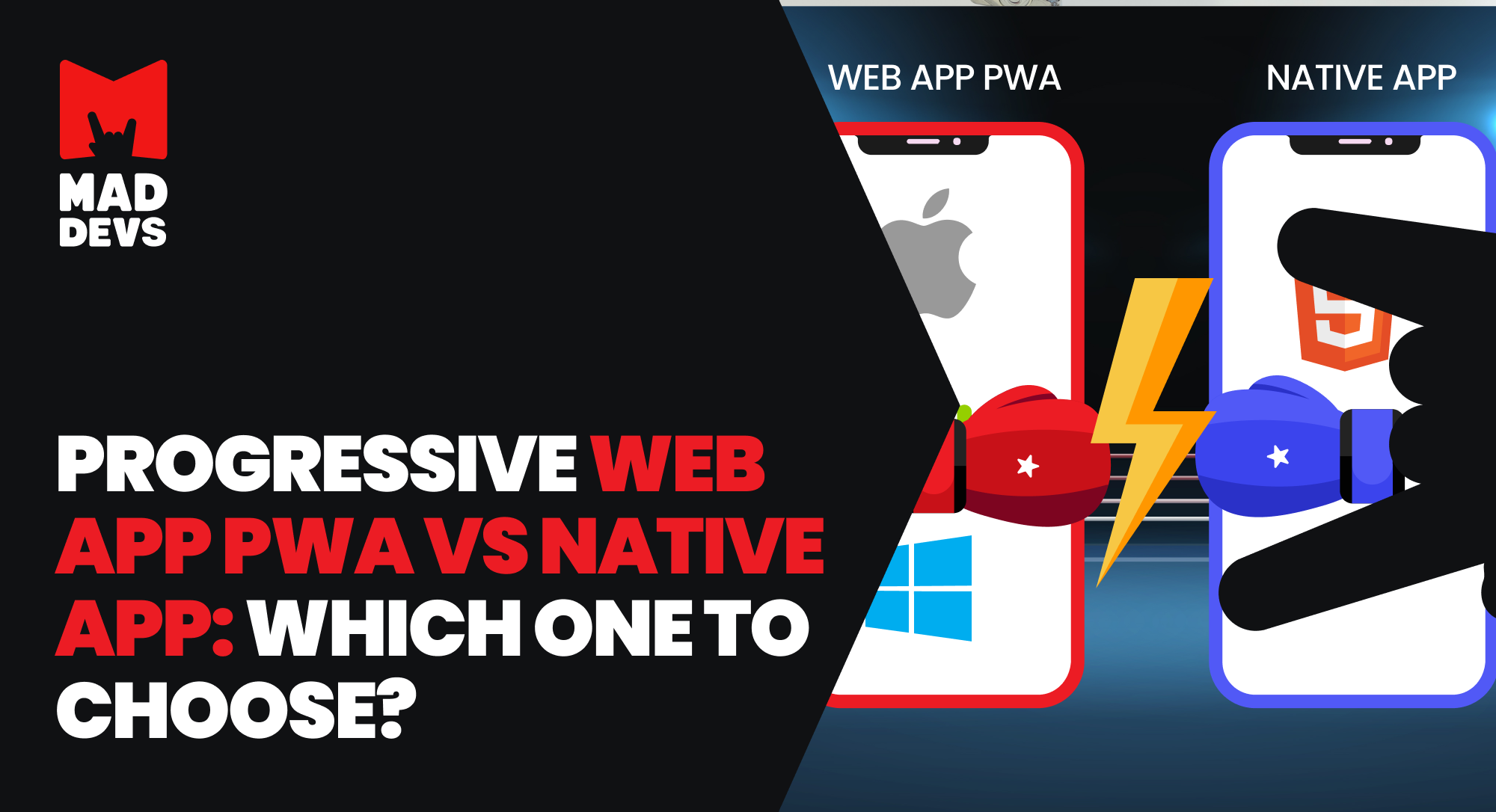In 2023, mobile apps enjoyed over $171 billion in revenue, and that number is set to grow. There are currently 8.93 million apps in use today, ranging from shopping assistants to health trackers. While the market is large, there's always room for innovative ideas that meet consumers' needs, especially if you already have an established business or service that can easily be made into an app. Among the important questions app creators may be thinking about is how much profit an app makes.
There's no simple answer to this question. While many monetization models are available to app developers and owners, not all of them work for every type of app. This is why we've prepared an article that offers you a thorough breakdown of each model and shows you how to get your app to start making money for you.
How do apps make money?
The simple answer to this question is through monetization. As the "money" part of the term suggests, monetization refers to earning revenue from an asset, in this case, an app. The means by which you go about doing this, however, will depend on the type of app you have, your market, and other factors. We'll look at the different models available and explain the advantages and disadvantages of each that are worth considering before you choose the one for your app.
As you may have noticed from your personal experience of using apps, there are free apps and ones you must pay for to download. How you monetize your app will depend on the category to which your app belongs. Let's examine paid apps first.

Paid apps
In terms of monetizing an app, requiring users to pay for it upfront will ensure immediate revenue from each download. Before rushing off to think of the price, though, consider the last time you paid to download an app. Not every app will benefit from such a fee, so review the pros and cons of this approach before choosing it.
➕ Pros
- Immediate revenue: Charging for the app upfront generates immediate revenue from each download.
- Higher perceived value: Paid apps are often perceived as higher quality or more valuable.
- User commitment: Users who pay for an app are more likely to be committed to using it, which could lead to higher engagement and retention rates.
- No ads: With upfront payments, there's less pressure to monetize through ads, allowing for a cleaner, ad-free user experience.
- Targeted user base: Charging for the app can help attract a potentially more profitable user base, as those willing to pay are often more engaged and serious about the app's content or functionality.
➖ Cons
- Fewer downloads: An upfront cost can deter potential users and lead to significantly lower download numbers than free apps.
- High expectations: Paying users tend to have higher expectations regarding app quality and support, which can increase the pressure to deliver a flawless experience and prompt updates.
- Limited monetization options: If users pay for your app, it will be difficult to ask them to make additional purchases or watch ads, limiting future revenue streams.
- Competitive disadvantage: A paid app can struggle to compete in a market flooded with free apps, especially if similar ideas are available.
Potential users will consider whether they trust that they'll receive a fair return on their investment before paying for an app. If your app has a well-established reputation that has earned users' trust, or you can follow through on your promises for a unique and premium experience, this option may work for your product. However, as the disadvantages of paid apps show, it doesn't work for everyone, so let's look at the other options available.
Free apps
As you can guess from the name, apps within this category are free to download. This is the most common method used for apps today, as you can most likely confirm based on personal experience. Before we examine the monetization models used for free apps, let's break down the pros and cons of making an app free.
➕ Pros
- More downloads: Free apps generally attract more users because there's no financial barrier to entry. This can be beneficial for building brand recognition and expanding your user base.
- Increased user engagement: Offering an app for free can lead to higher engagement rates, as users are likely to try out and use an app if it's free. This can also help gather valuable user feedback and data for future improvements.
- Flexible revenue options: Free apps can be monetized through alternative methods such as in-app purchases, advertising, or premium features. This can generate revenue while still attracting a broad user base.
➖ Cons
- No guaranteed revenue: If users don't pay to download your app, you'll have to rely on other methods to generate income, which won't guarantee a stable profit.
- High user expectations: Users of free apps may expect high-quality features and frequent updates without paying. Meeting these expectations can be challenging, particularly with limited resources.
- Competitive market: There are many free apps on the market. Standing out and attracting users can be difficult and might require significant marketing efforts.
With an understanding of the advantages and challenges of earning an income from free apps, let’s examine the differing monetization models app creators can use.
Monetizing free apps
Ads
Employing ads in an app is one of the most common means of creating a revenue stream. You can use different types of ads, such as banners, full-screen ads, and videos. Use your experience to recall apps that employed ads effectively and those that interfered with your use of the app. Finding the balance is a challenge, but many apps do it successfully.

You can use different strategies to blend ads into the app's environment. Some examples include:
- A mobile game that rewards players with bonuses, such as in-game currency or upgrades, for watching ads.
- A photo editing app that shows a video or full-screen ad on a loading page.
| PROS | CONS |
|---|---|
| Chances of constant revenue stream: If successful, ads can provide a way to monetize the app without charging users directly, which can be crucial for funding ongoing development and maintenance. | Inconsistent revenue: Income from ads can be inconsistent and fluctuate based on factors like ad inventory and user engagement, making it difficult to predict earnings. |
| Can adapt to user behavior and preferences: Trackers and other tools help apps deliver ads that are relevant to users and don't seem as random or obtrusive. | Harm user experience: Ads can interrupt and detract from the user experience, potentially leading to frustration and lower user retention. |
| Exposure to new markets: Apps with ads can often attract advertisers looking to reach a broad audience, which might help the app gain credibility and attract more users. | Privacy issues: Ads often track user behavior, which can raise privacy issues and lead to user concerns. |
| Attract more users: A free app with ads can attract more users than a paid app, potentially leading to a larger user base. | Decreased performance: Ads can slow down app performance or consume additional resources, potentially affecting the app's overall speed and responsiveness. |
Subscriptions
Subscriptions are another means of monetizing your app. Sometimes called "freemium," this approach lets users experience at least some of the features for free and gain value that will hopefully encourage them to make a purchase. This model can be used in tandem with ads or as a substitute for that approach.

Here are some examples:
- If your app uses ads, you can offer users a paid subscription that removes ads from the app, improving their overall user experience.
- You can create two or more subscription tiers that offer paying users access to different features or bonuses.
| PROS | CONS |
|---|---|
| Improved user experience: If used instead of ads, subscription models let users enjoy an ad-free experience. Regular updates and ongoing content or feature improvements for subscribers can increase user engagement and retention. | Complex to manage: Managing subscription tiers, billing cycles, and user access can be complex and require robust infrastructure and customer support. |
| Predictable revenue: Subscriptions provide a predictable and recurring revenue stream, which can help with financial planning and stability. | Difficult to balance free and paid content: If not managed carefully, the free version might become too limited, making it less appealing and potentially driving users away. |
| Flexibility: Different subscription tiers (e.g., monthly, yearly) can cater | User resistance: Some users may be unwilling to pay for a subscription, which can limit the app’s revenue potential and lead to lower conversion rates. |
In-app purchases
If you've downloaded an app, you've probably noticed small text that reads "in-app purchases" somewhere on the screen.
There are two types of in-app purchases: consumable and non-consumable. Here are examples of both:
- A mobile game offers consumable items like extra lives, in-game currency, or power-ups. Users can buy these items to progress faster, unlock special abilities, or overcome challenging levels.
- A photo editing app might offer non-consumable purchases such as additional filter packs, advanced editing tools, or access to premium templates. Once purchased, these items are permanently available to the user.
| PROS | CONS |
|---|---|
| Flexibility: In-app purchases offer flexibility for users to spend as little or as much as they want and cater to a wider range of budgets and preferences. | Frustration: Users may become frustrated if they feel pressured to make purchases to enjoy the app fully. This can lead to negative reviews and decreased retention. |
| Engagement: Users can customize their experience by purchasing additional features, content, or resources that enhance the app's overall functionality and enjoyment. Valuable in-app purchase options can motivate users to continue using the app to make the most of their purchases. | Complex to manage: Implementing and managing in-app purchases requires a robust infrastructure and a balance between making free features interesting without undervaluing purchasable options. |
| Scalability: Developers can add new purchasable content or features to keep the app fresh and appealing to users, such as holiday-themed items or collectible items for special events. | Potential abuse: There is a risk of exploiting users, especially younger audiences, with aggressive or manipulative in-app purchase strategies, which can lead to ethical concerns and legal issues. |
Sponsorship
This approach involves reaching out to potential sponsors with an attractive pitch that demonstrates the value your app can bring to their business. Here are some examples:
- A fitness app offers users free access to calorie counting and workout tracking. The app partners with a sportswear brand to create a sponsored workout plan, where users see the brand's logo and receive special offers for purchasing the brand's products.
- A travel app offers free access to travel reviews, booking tools, and planning resources. The app partners with a particular city's tourism board, which sponsors a section of the app dedicated to that city, including special travel guides, promotions, and featured attractions.
| PROS | CONS |
|---|---|
| Guaranteed revenue stream: Sponsorships provide a steady income stream without charging users directly, making it easier to keep the app free for users. | Potential conflicts: There may be conflicts of interest between the app's goals and the sponsor's objectives that lead to compromises that affect the app's integrity or user experience. |
| Enhanced user experience: Well-integrated sponsorships can add value to the user experience, such as through sponsored content, exclusive offers, or enhanced features. | Content limitations: The need to align with sponsors' interests might limit the app's content or features and reduce its appeal to a broader audience. |
| User acquisition: Collaboration with reputable brands can enhance the app's credibility and attract more users. | User perception: Users may perceive sponsored content as biased or less trustworthy, potentially affecting their overall trust in the app. |
Other options
The monetization strategies listed above are the most common models you'll see as an app user; however, a couple more approaches are available. Although not appropriate or applicable to all apps, they may be of interest for your product:
Licensing
This approach involves allowing businesses or other apps to use your app for a fee. There are several ways to license your app:
- Enterprise licensing: A large business can pay a fee for unlimited use within their organization.
- White labeling: You can create an app and sell it to another business for them to rebrand and use under their name.
- API licensing: If your app has a unique feature useful to other apps and services, you can create an API for integration that they can pay to use. This approach allows you to make money from users of other apps.
- OEM (original equipment manufacturer) licensing: A much rarer option. This means your app is pre-installed on hardware devices or bundled with other software by the original manufacturers. This approach limits how you can distribute your app beyond pre-installation.
Data monetization
You sell user data to third-party services for research and other purposes. Of course, privacy is a significant concern for many people today, so there are many regulations to adhere to if you adopt this model. Even if you comply with legislation, users may lose trust in your app if they know you sell their data. There is also the risk of data breaches that will compromise user information and your reputation.
How to determine the ideal app monetization model for your brand?
As you can see, there are plenty of models to use for monetizing your app. While we listed them separately, some can be combined to increase your profit potential. For example, you can run ads in your app and offer subscription options that allow users to remove ads. Many mobile games offer players in-app purchases to boost their experience and reward users who watch ads. Your choice depends on your needs, your app's market, and other factors. Let's look at them:

Understand your app's unique value
This step is essential, and you can't begin to look at other factors without considering this one first. If your app is simple and doesn't offer many features, you may be unable to justify charging a download fee or offering subscription options. Likewise, if your app features premium tools that will help users beyond existing solutions, you have more options available.
Know your audience
It's important to consider your future users and what, if any, purchases they can make. Review data on specific groups based on age, region, and profession. Also, consider the devices your audience will use to view your app. In some cases, combining monetization models will allow you to create attractive offers to customers with various financial situations. For example, a user who doesn't want to pay for a subscription may be willing to watch ads while using the app or to get rewards. Offer levels of subscriptions that are accessible to different users.
Research your competitors and the risks
Study the market and learn what models your competitors or similar apps have implemented. If possible, compare their metrics to find a pattern that connects monetization models to downloads or revenue. Be aware that not all apps are alike, so even if you find a "winning" combination, it may not work for your app.
Test and gather metrics
Knowing which monetization model best suits your app can be difficult, so don't be afraid to test different options. Collect data on how users respond and make adjustments. The key is to remain flexible and adapt to changes in your user base and the market. Remember that new monetization strategies may appear, so be ready to embrace them.
How much money can you earn?
There's no simple answer to this question. As mentioned in the introduction to this article, apps generated a total revenue of $171 billion in 2023. That includes apps of well-established brands, free and paid apps, and new apps. Some of them earned a lot, while others enjoyed more humble amounts. The revenue your app can earn you is influenced by several factors:
- The market: High competition means fewer earnings until you win your spot.
- Your idea: A unique and innovative idea will boost your chances of success.
- Region and device: Ad earnings depend on where users watch them and on what devices
Of course, the most important factor is your strategy. You can't predict how much your app will make, but a clear plan will increase your chances of creating a stable income that you can grow. Do your research, be prepared, and be patient.
Mad Devs and your mobile app
There are many models and approaches to monetizing a free or paid app, but one rule will improve your chances of making a profit: create an app that brings value to users. With the growing number of apps on the market, it's challenging to do this and stand out. That is why having a team of experts who understand the inner workings of apps and the market is essential to bringing your app to reality. Mad Devs has the professionals you need to do just that and create an app that is unique and valuable to users.











